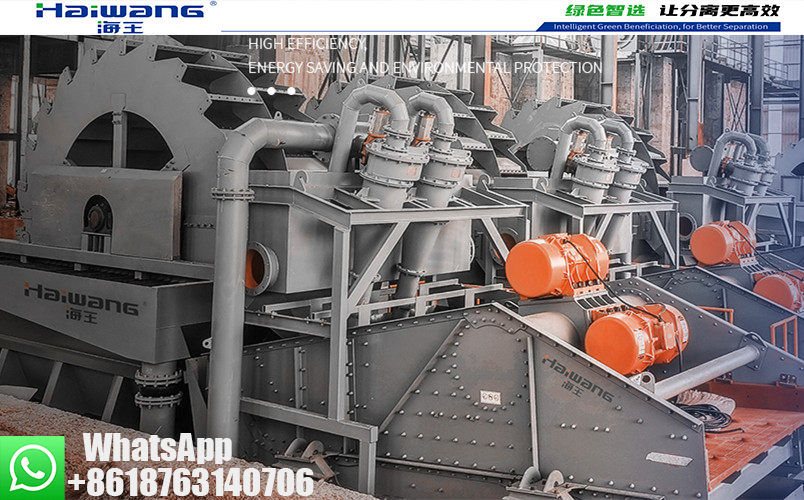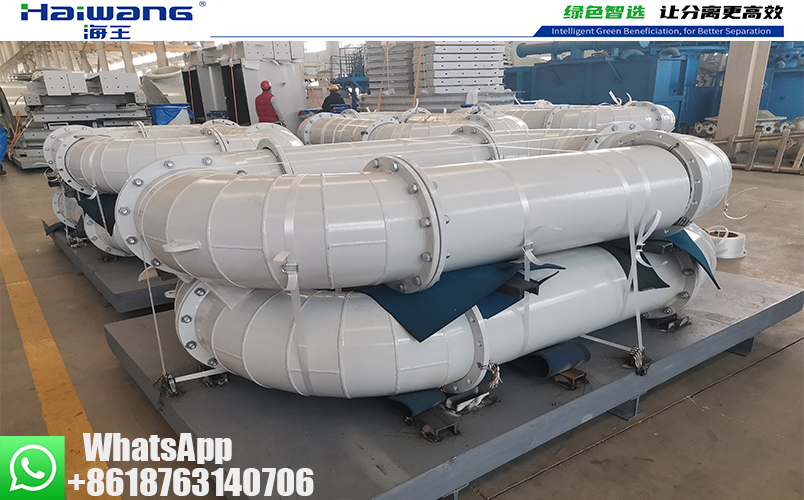Why Do Ores Need to Be “Classified”? — The Role of Hydrocyclones in Mineral Processing
In mining operations, ores extracted from underground are not immediately ready-to-use “products.” They are often mixed with soil and impurities and must go through a stage known as mineral processing to separate the valuable minerals.
One of the most important steps in mineral processing is called classification. Simply put, it means separating coarse and fine mineral particles. Why is this necessary? Because particles of different sizes behave differently in the subsequent grinding and flotation processes:
Coarse particles need to be ground further to release the minerals.
Fine particles are already suitable, and further grinding would only waste energy and resources.

This is where the hydrocyclone comes in. A hydrocyclone looks like an inverted cone. Despite having no complex moving parts inside, it can, under the action of high-speed rotating water flow, throw coarse particles outward and discharge them from the underflow, while fine particles are carried to the center and discharged through the overflow. It functions like a “natural sorting machine”—efficient and precise.
For many years, our company has focused on the research and application of hydrocyclones. We have accumulated extensive experience not only in metallic mineral fields such as iron, gold, and copper mines but have also extended hydrocyclone technology into coal, environmental protection, and chemical industries. By continuously improving product materials and structural design, Haiwang Hydrocyclone products have become more wear-resistant and longer-lasting, helping users reduce energy consumption and operational costs.
In mineral processing, classification and separation are key stages for improving ore utilization and economic efficiency. Hydrocyclones, as efficient classification equipment, have been widely applied in the industry due to their simple structure, high processing capacity, and broad adaptability.
The working principle of a hydrocyclone relies on centrifugal force to guide particles along different trajectories. Coarse particles, being denser and subjected to stronger forces, are discharged downward along the outer flow, while fine particles rise with the inner flow and are discharged through the overflow. This separation mechanism not only enhances classification accuracy but also greatly improves processing efficiency.
In traditional mineral processing, the closed-circuit system of a ball mill and hydrocyclone is the core step for improving grinding fineness and metal recovery. Accurate classification by hydrocyclones effectively prevents over-grinding, thereby reducing resource waste.
Our company has always been committed to hydrocyclone research and application in the mining sector. Our products have been widely used in iron, gold, copper, and other mineral projects, and have also delivered outstanding performance in coal, chemical, and environmental industries. With years of industry experience and an innovative spirit, Haiwang Hydrocyclone continues to optimize product design and develop wear-resistant, long-life hydrocyclone linings, helping customers lower operating costs and improve productivity.

Looking ahead, Haiwang Hydrocyclone will continue to deepen its expertise in mineral processing, driving the application and development of hydrocyclones in intelligent and green mining. As the demand for green and smart mines grows, hydrocyclones will play an even greater role in energy conservation, environmental protection, and intelligent control. Haiwang Hydrocyclone will keep delivering reliable classification solutions to mining enterprises worldwide with professionalism and innovation.







